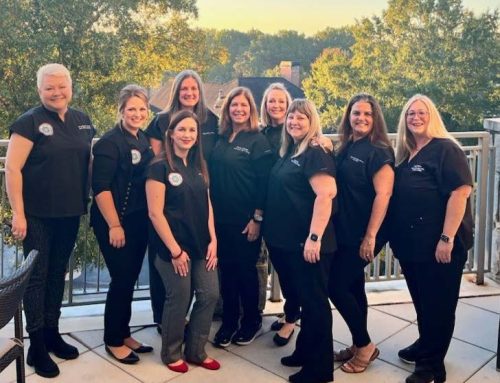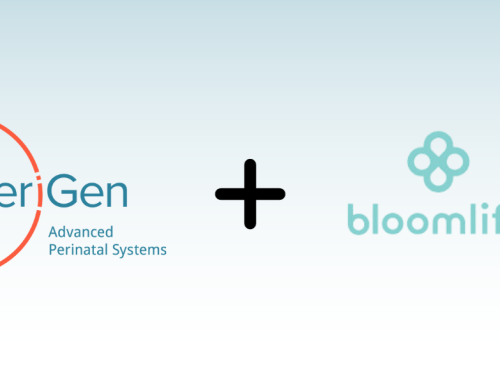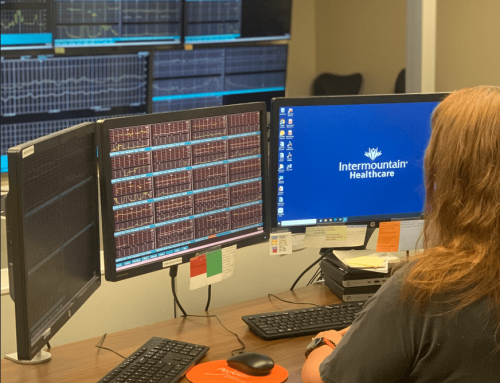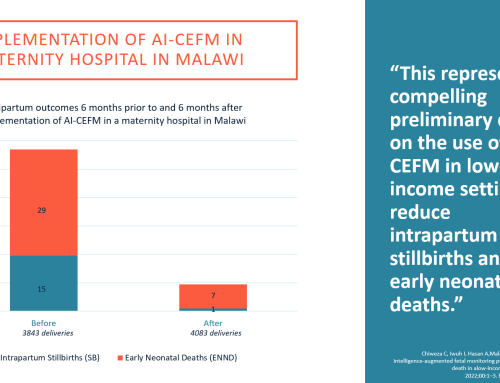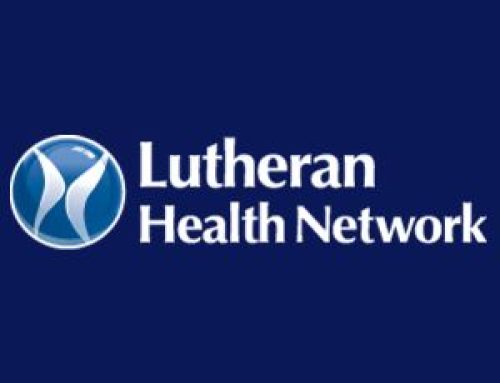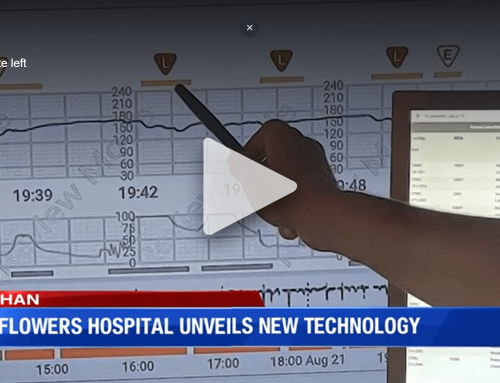
One Million by One Million Blog | Sramana Mitra | December 16, 2018
I have been talking about the applications of AI on Healthcare IT problems. Here is a great case study.
Sramana Mitra: Let’s start by having you introduce yourself as well as PeriGen to our audience.
Matthew Sappern: I’m the CEO of of PeriGen. PeriGen is a software developer. We make software as a medical device. We’re FDA-cleared. Our primary goal is to build software that helps clinicians prevent adverse outcomes in childbirth, which is a pretty important task.
Sramana Mitra: Double-click down on that and explain what exactly are we talking about. Give us a use case and talk us through how this works.
Matthew Sappern: I’ll give you a couple of statistics why this is an urgent need. As you look out across both maternal and fetal outcomes in childbirth, more than 50% of adverse events, whether it’s a mom who hemorrhages and suffers some form of maternal morbidity post-childbirth or a baby who suffers brain injury because of hypoxia, are avoidable.
The vast majority of those avoidable cases are attributable to what is officially called failure to recognize and treat clinical warning signs. In my mind, that is just a failure of medical device developers to build technology that helps nurses and other clinicians deal with what has become a fairly complex patient population.
Sramana Mitra: How do you treat that? What interventions would deal with that from a software point of view?
Matthew Sappern: Here’s what we do. The issue with the trend of failure to recognize and treat clinical warning signs is that nurses are doing a million different things. The clinical setting is very complex. They are documenting. They are talking to patients and their families. They’re helping colleagues.
The reality is the current fetal monitoring solutions are looking at only 10 minutes at a time or showing 10 minutes of that fetal heartrate at a time. When things start to go bad, it’s much more about trends. It’s much more about, “Is there an abnormality and what has occurred to that abnormality?” These are things that a nurse who is running around doing a bunch of different things is unfairly charged with trying to monitor on a 24/7 basis.
The issue is they often don’t have the requisite information at hand into how the baby and the mother are tolerating labor. Oftentimes, they’ll start to recognize that things are starting to go wrong too late in the game. A secondary issue, which is also solved by AI-oriented software is that every nurse looks at these fetal scripts differently.
While there is a number of studies and trainings that occur over time about how to manage specific instances, you’ve got to get to a point where every nurse is looking at these strips the same way. A series of fetal heartrate deceleration to Nurse Mary looks exactly the same way as a series of fetal heartrate decelerations to Nurse Jane in California.
That is the real struggle because every nurse is different. They’ve got a different set of experiences and biases that they may bring to that delivery room as well as a different set of training of time served. It’s very difficult to create standardized care if you build all of these protocols on a very sandy and unstable foundation, which is interpreting what’s going on at any given time in the same way.
Matthew Sappern: Where computers are so helpful with that, as you can imagine, is computers don’t get tired. They’re not getting coffee or arguing with someone. They look at the same series of data the same way every time. Once we figured out the ability to interpret these waves, we’re able to let the doctors or nurse know when there’s an issue at hand.
Even more critical is we can now take multi-factorial looks. We can be looking not just at the fetal heartrate. We can be looking at the mom’s vitals or labor progress. We can take all of those factors into account in a millisecond and look at it over a long stretch of labor.
There are certain things that computers are especially good at. Pattern recognition of multifactorial components is really one of the greatest things about AI solutions. That’s what we do. We provide a safety net that helps augment what clinicians are doing. Where there are certain areas of care that require a very objective view, we help reaffirm that object view.
Sramana Mitra: What is the level of penetration of your kind of technology in the hospital systems of America?
Matthew Sappern: It’s nascent. Healthcare is not a speedy adopter of technology. That vast majority of physicians and nurses feel very comfortable with the information that they gleaned while in school and studying the process behind it. It’s rare to find clinicians who are looking around anxiously for the latest innovations.
Since we’re dealing with humans, we all have to be remarkably careful. We are very careful in how we develop our software. It goes through an FDA clearance process. We are just now starting to look at what tools like AI and other machine learning technologies can really bring to healthcare. It couldn’t come a minute too soon because there are some pretty significant trends going on in healthcare that I think we’re only going to be able to manage with the help of technologies such as Perigen.
Sramana Mitra: Double-click down and talk about how you’re applying AI. What are the algorithms doing within your dataset?
Matthew Sappern: It’s purely about pattern recognition. We’ve developed the algorithms using TensorFlow that are developed in order to recognize patterns that shouldn’t be occurring. If we see something, it’s essentially like a needle in the haystack. The issue is the frequency of that outcome is not that great. You become very used to looking at heart rate patterns or rates of contraction that are okay. When a challenging one or a non-reassuring pattern comes across your screen, your eyes gloss over. That’s the real issue.
Whenever you’re trying to find these needles in the haystack, that’s a great opportunity for some sort of pattern recognition tool. That’s what we build with our AI applications. We have to take those algorithms and we then have to lock them down. We can’t be constantly evolving these algorithms. They have to go through an FDA clearance process. There is a fair amount of rigor and review that ultimately goes into that process.
I know where some people have mentioned to me that it’s not really AI unless it’s perpetually changing and learning all the time. I understand their perspective, but when you’re dealing with an FDA-cleared medical device, you can’t have that level of variability. What we try to create is a set of algorithms that recognizes patterns. I’m going to use the words of the National Institute of Health as they reviewed our solution. They found that we had substantial agreement with experts’ evaluations. In our mind, that’s the right fit for tools like ours – trying to put an expert evaluation at every bedside as opposed to consistently learning in real-time.
Sramana Mitra: In the healthcare space, where are some of the other areas where you see the possibilities of this kind of pattern recognition and interventions based on pattern recognition?
Matthew Sappern: There are so many. Take the ICU for instance. You walk into an ICU. A typical patient has multiple telemetry devices hooked up. You’ve got nurses who are trying to manage all of that for each patient. There’s no normalization of that data. These are areas where if you were able to take tools like PeriGen and apply it to that service line, you could probably figure out how you can manage some of those ICU patients. Why that’s important is because the nurse to patient ratio is a bit less in a step-down unit.
It’s certainly more affordable for hospitals to manage that. It’s a more economic approach to managing healthcare that is ultimately made possible by the fact that these machines are helping nurses manage care in a reasonable fashion. Another trend that you’re seeing all over the place is healthcare at home. If you read up on the CEO of Kaiser, he mentioned that the future of healthcare is in the home. Picture a home that is chock full of telemetry devices whether it’s elder care or NICU babies coming home early.
Imagine a world where instead of going and talking to your physicians, there is a device that monitors key factors all the time. You look at companies like Livongo. They’re doing some remarkable things in terms of closed-loop diabetic management which is about not only having monitoring tools and telemetry devices but also trying to help the patient care for themselves at the same time instead of sending tons of data off to a physician. It’s sifting through data.
These are areas where I think there’s a tremendous amount of upside for entrepreneurs and for folks who are developing new technologies. There is no doubt that healthcare is moving further and further away from the physical plans of the hospital. Whatever can be done to create a series of tools and wearables and software to interpret data, there is a tremendous upside in that.
Sramana Mitra: Is there a player on your radar that’s addressing the ICU use case? It’s a very compelling use case.
Matthew Sappern: Off the top of my head, I can’t think of anyone that’s doing a great job at that. Qualcomm has built some infrastructure to allow that. We’ve got a commercial agreement with Qualcomm Life where they sell some of our technologies as well. As I look at companies that have the plumbing in place in an in-patient facility and to take information directly from the medical device and run some analytics against it, I would say Qualcomm Life’s acquisition of Capsule is the leader in having that ability.
They’re just starting to develop some of the analytical sides of this. There’s the data generation side and then there’s the data interpretation side. They have the ability to take information from medical devices. Now it’s a question of if they can cost-efficiently bring to market tools to help analyze that data in real-time. I am hopeful they will. If they don’t, somebody else will. I would say that they have a leg up by the fact that they have data passing all of their wires.
Sramana Mitra: We’re seeing an increasing amount of AI applications in the healthcare IT domain. I don’t know if you’re familiar with this announcement that we recently made of a European partnership with the European Institute of Innovation and Technology and their digital health arm. 115 companies from Europe are going to be accelerated within the One Million by One Million program. They all have different flavors of all this stuff going on.
Matthew Sappern: Whatever we can do to put care closer to the patient is pretty remarkable. These digital platforms have the triple ability to generate data, interpret that data, and deliver information directly to the patient in milliseconds. You’re seeing more and more people who are much more comfortable with these technologies and using these technologies in everyday life.
My father could never wrap his head around an ATM. Now I can’t even remember life without an ATM and I’m in my mid-50’s. God knows what my son and daughter are looking at that is going to be prehistoric relatively shortly. The current generation kids are much more comfortable with interacting with technology in many ways and more comfortable with understanding the data that comes from them.
Another space that I meant to mention before is, there’s such a significant growth in ambulatory surgery. It used to be that all surgeries were in the hospital. Now they are putting in hip, shoulders, and knees, and doing some significant internal organ surgery in an outpatient setting. That’s great and certainly cost-efficient. It helps the clinicians be more of the masters of their domain, but it’s still a picture of a single nurse managing over two or three patients who are coming out of anesthesia.
Sramana Mitra: I think that problem is rampant – not using data and making off-the-cuff decisions. Look at doctors. Primary care physicians spend 15 minutes with the patient. How can they even make sense of all the data that’s out there in 15 minutes?
Matthew Sappern: Yes, it’s crazy. Let’s talk about the challenges for a minute though. It’s a great cocktail chatter, as you can imagine. You have these conversations far more than I. The fact of the matter is machine learning and artificial intelligence is in a very nascent form right now. You will be stunned at the amount of people I talk to who take a terabyte of information and drop TensorFlow on top of it, stir it a little bit, and then come back in 24 hours. You’ve got some great healthcare algorithms. It’s really absurd.
Matthew Sappern: There are a lot of people who feel that artificial intelligence and machine learning is much further along than it really is. There is so much data out there right now. I think that’s an important first step. There’s data and there’s actionable data or what some of my colleagues call the ground truth – information that’s been curated in a way that you’re confident that it’s representative of what it needs to be.
If you’re not using that curated data to teach these machines, then you’re really not generating anything of real value. There is a lot of hard work in coming up with even a nominally accurate algorithm using artificial intelligence. It has taken us years and years to finally get to a point where we’ve got something that we’re confident about. It is not for the faint-hearted.
Sramana Mitra: Also I think there are a lot of issues around how you get the data out of existing systems and then build AI algorithms out of that. There’re a lot of adoption challenges. With all that being said, it’s not rocket science either. It may be not that far along today in 2018, but give it five years, it’s going to be moving very fast.
Matthew Sappern: The speed of advancement is important. I think it’s important to underscore that you will always need people who really understand this data at the front end of these processes. I’ll share some other huge challenges we have in healthcare especially. You just touched on it – the adoption of these technologies.
Sramana Mitra: Adoption is a big challenge, yes.
Matthew Sappern: I walk into rooms with nurses and doctors and I say, “How many of you used Amazon this week or interact with Alexa?” Everyone raises their hand. Everyone is interacting in some type of algorithmic approach. But they are so resistant, at first blush, to deploying it in their work. Legacy tools will always lead to the same set of outcomes.
The bottom line is, you’re not going to get much better unless we start doing things differently. It’s so logical, yet it’s so hard to get people to accept that. Our second biggest challenge is getting people to embrace it and getting them to understand that it’s compelling for them to use and can make their lives easier. It’s not a threat because ultimately there are things that these tools don’t do. They are not terribly empathetic. They don’t deal well with exceptions. These are things that are so important.
Every first meeting I have in every health system, I need to disavow them of the fact that I’m a vendor of robots coming to take their jobs away. In reality, I’m a vendor of an application that’s going to help make their jobs better and help make them more effective at their jobs.
Sramana Mitra: Very good. Thank you for your time.

